Arad proved to be a calm and quiet town somewhere between the Judean desert and Negev desert in Israel. We were happy to stay there away from the noisy Tel Aviv and Jerusalem. It looked even deserted – not many people on the streets, not many cars. We had our morning coffee in the garden of the house we stayed in, said goodbye to our very kind hosts and headed to the Judean hills to explore the glorious Masada fortress.
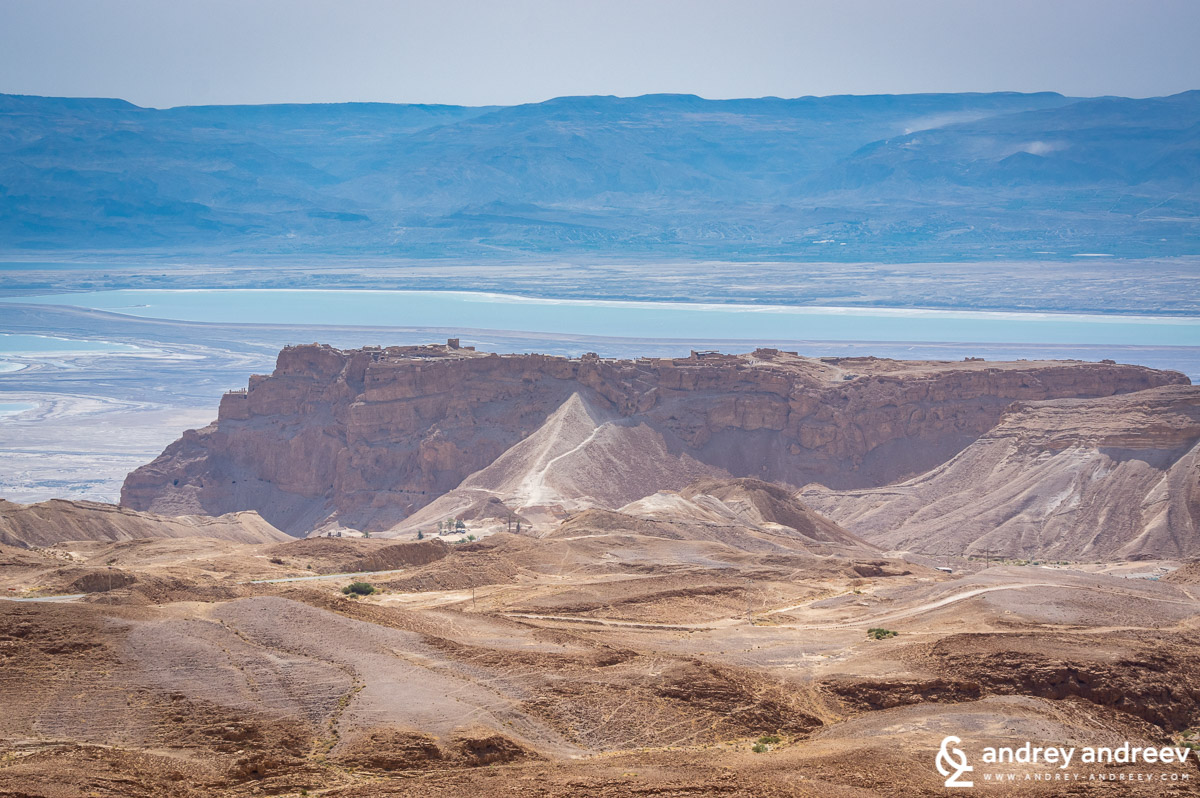
I had not before heard about Masada – the impregnable fortress and a favourite residence of the Judean king Herod the Great (37 BC – 4 BC). I learned about it only recently while preparing for my 3-day trip to Israel in May 2016. Masada is a place of historical importance for Israel and one of the most impressive fortresses I have ever seen. It was also recommended by travel guides and our hosts in Arad and we headed through the desert, looking forward to see it.
Getting to Masada
Masada is located some 20 km east of Arad and is reachable by a good asphalt road through the Judean desert. We stopped for a while in the beginning of our journey to take photos of a herd of camels. They were calmly grazing what was left of grass while we were enjoying the exotic.
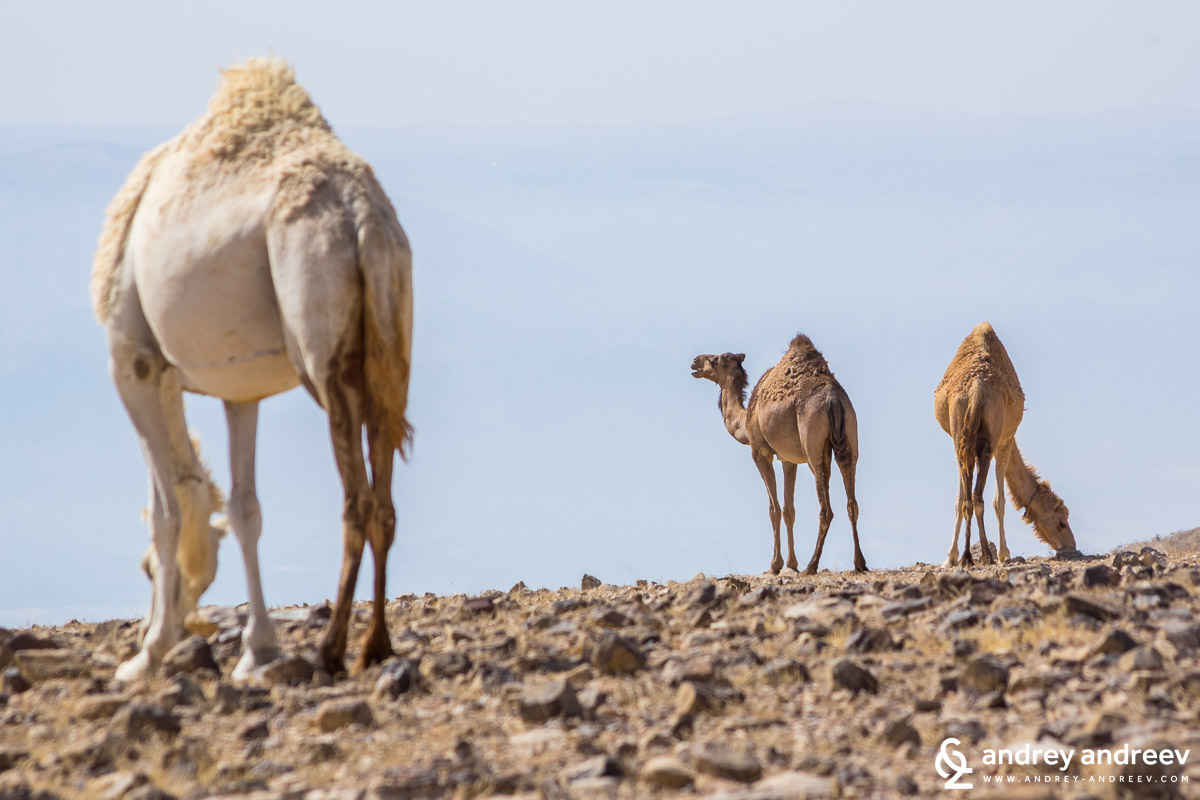
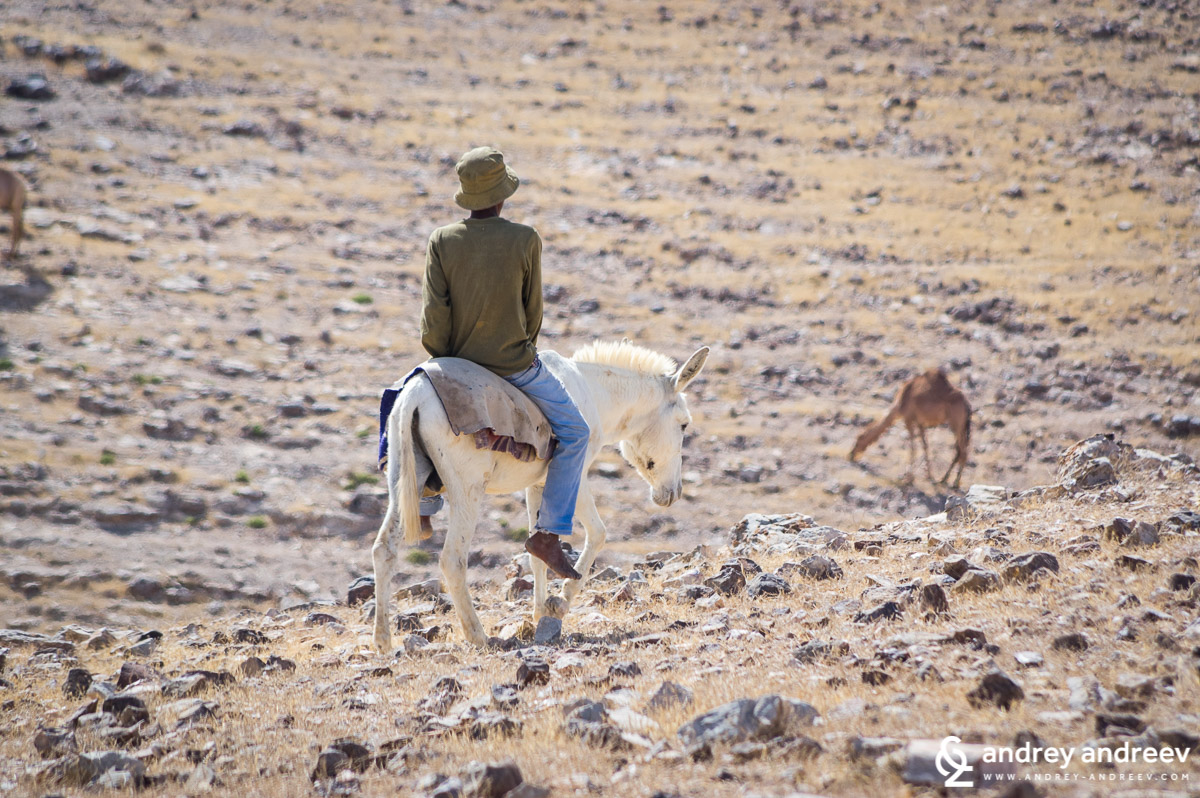
Masada is located on the western shore of the Dead Sea, between the oasis of Ein Gedi and the resort of Ein Bokek. It used to be an impregnable fortress on the top of a diamond-shaped hill, 450 m above the Dead Sea surface (which is Earth’s lowest elevation on land). The impressive vertical slopes of Masada make it a perfect place for defending any enemy. The place was also strategical because of its location near the main roads through the Judean lands and the salt-rich Dead Sea.
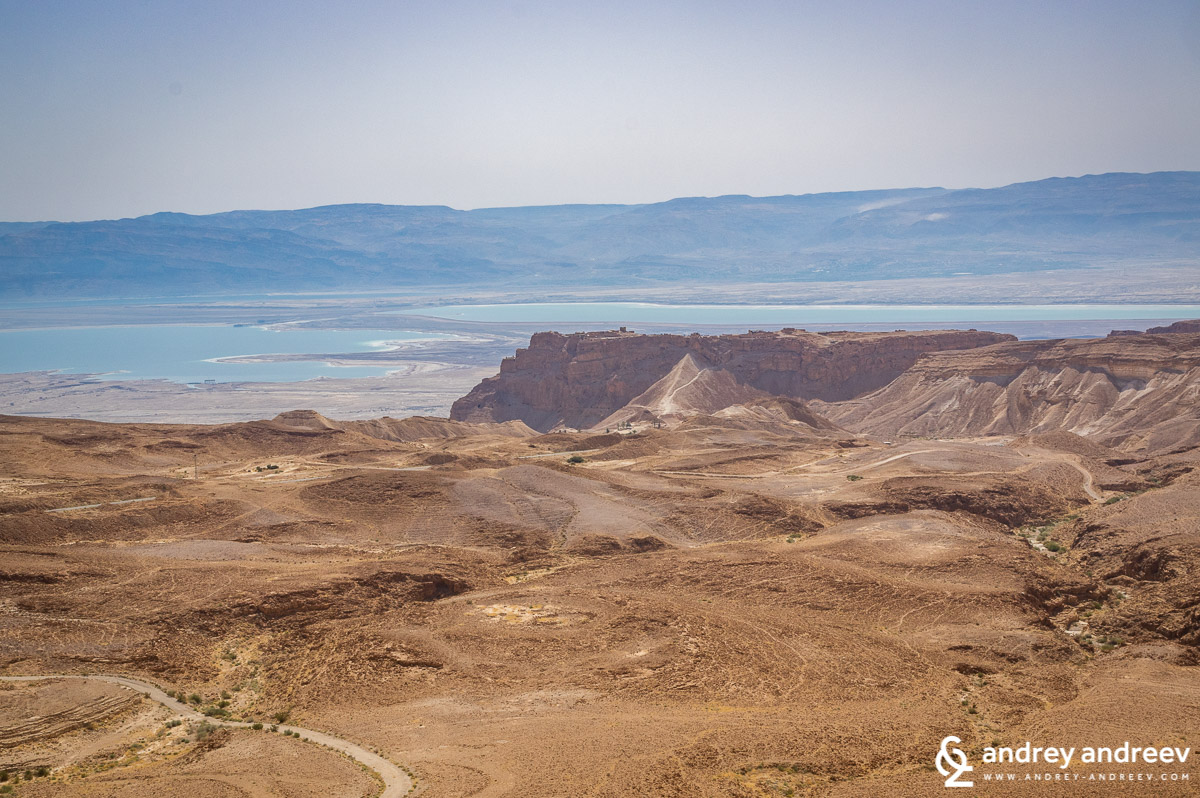
The Snake Path to Masada
Nowadays there are three ways to go up to Masada. You can start from its Western or Eastern side, depending which one is closer to you and how much are you ready to climb.

From the Eastern side the plateau is reachable by a road starting between Ein Gedi and Ein Bokek. At the foot of the hill there is a cable car which will take you up quickly for a fee. If you are enthusiastic, you can go up walking the Snake Path which takes about an hour. The Snake Path was the main and only road to Masada for decades while it was inhabited.
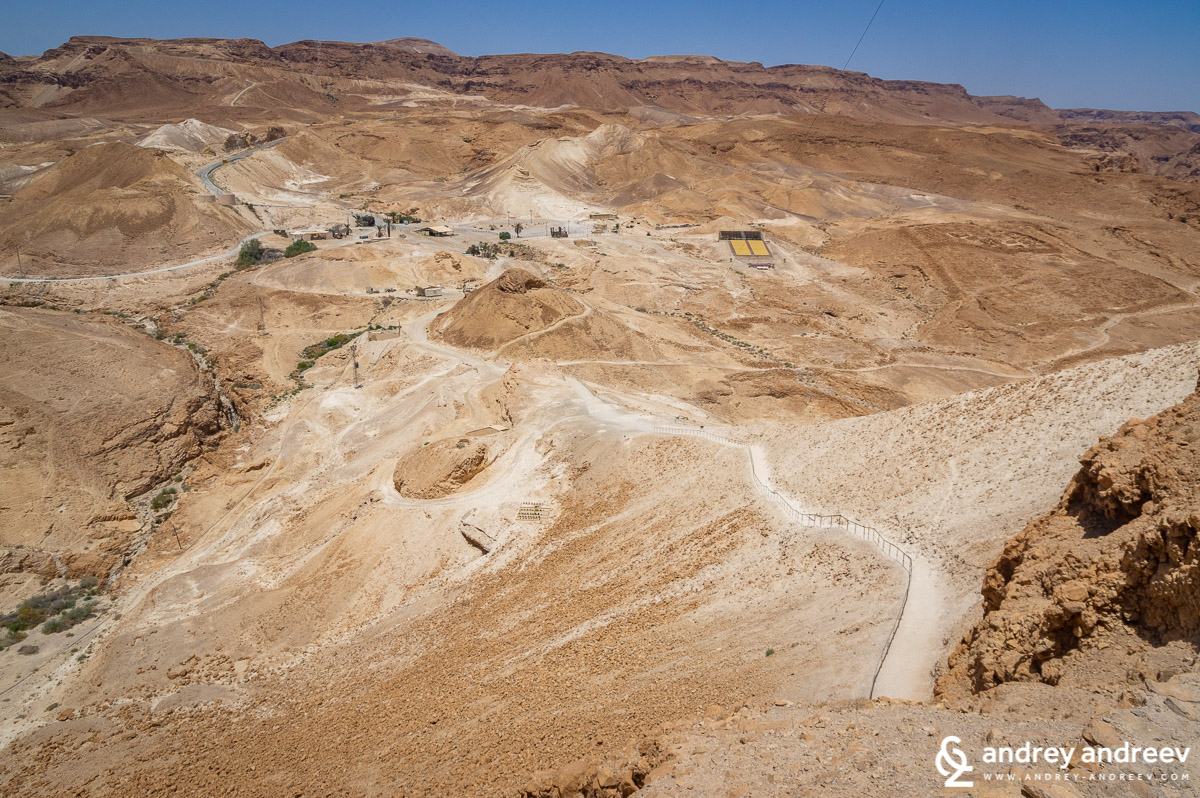
The Roman siege path
Today, thanks to the Romans, there is a second way – from the West. From this side you climb to Masada by a steep Siege path – created by the Romans to conquer the fortress in the 1st century CE. It takes around 20 minutes to climb the path – quite less than the Snake Path.
There is no direct road between the two entrances to Masada. If you want to go from one to another you should go back to Arad and approach it from the Dead Sea side. It takes more than an hour drive.
Masada before The Great Revolt
It is thought that the first fortress at this place was erected by the Hasmonean dynasty which ruled Israel for 103 years until 37 BC. Later it was conquered by Herod the Great who ended the Hasmonean rule and started the Herodian dynasty. Nowadays there are no preserved parts of the Hasmonean fortress. Herod the Great turned Masada into his own fort and lavish residence where to find shelter from his enemies. On the top of the plateau in the Judean desert Herod built a lavish and independent small town with two palaces, water system, storage complex and even a swimming pool. Herod’s residence was nothing less than the luxurious properties of today’s rich people.
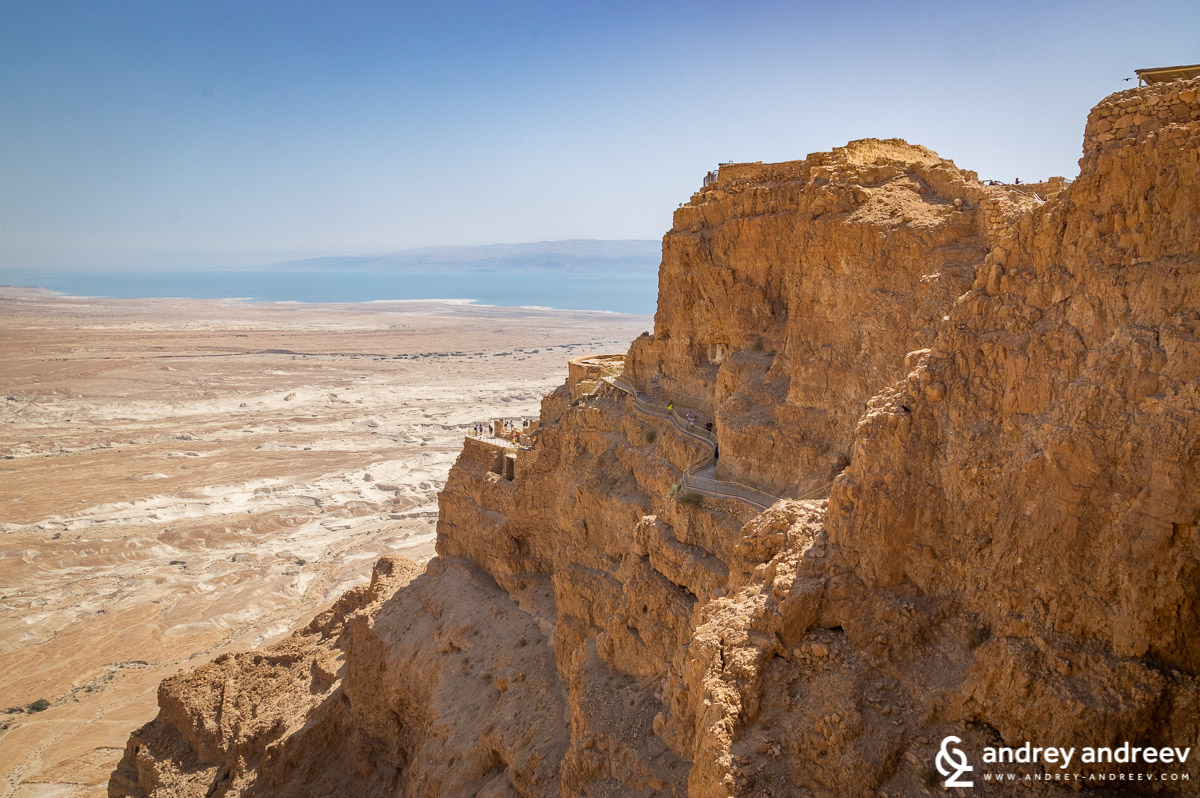
Masada was a favourite winter residence of Herod. It had two palaces – Northern and Western. The impressive three-level Northern palace was mostly used as a living area for Herod and his family and the Western palace was a place for receptions and meeting VIP guests. Together with the palaces, Herod’s constructors found a stunning way to ensure water supply in that deserted place. They made a water system consisting of many channels collecting the rainwater and transporting it to huge cisterns deep into the rocks. The reservoirs were so big that they could ensure water supply for a long time, as if there was a natural spring up there. Up in Masada there was even a swimming pool offering more entertainment for Herod and his guests.
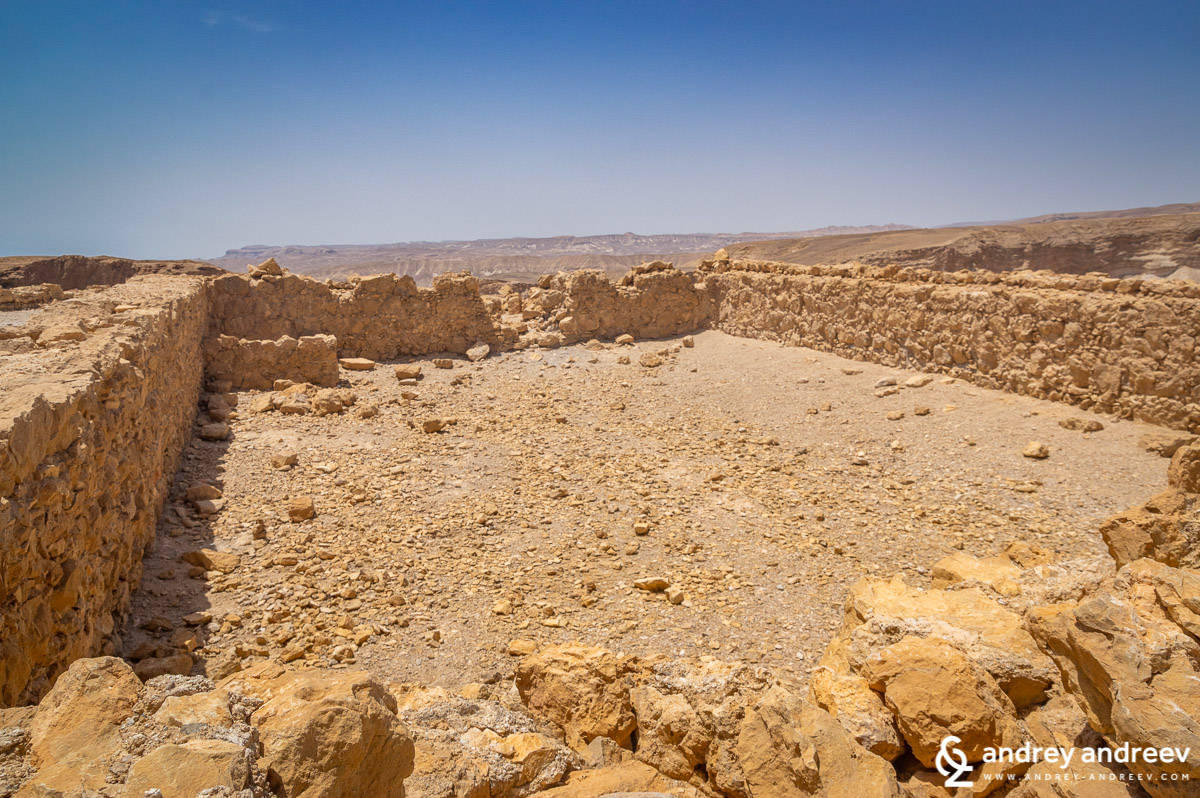
Masada after the revolt
The story of Masada after Herod’s age is told in the books of Jewish historian Titus Flavius Josephus, known also as just Josephus, born in 37 BC. He is still a controversial person in Jewish history. Josephus was a head of Jewish forces in Galilee during the First Roman-Jewish war, until surrendering in 67 CE to Roman forces. At first he was taken as a slave by Romans but later freed and granted Roman citizenship for which Jewish people count him as a traitor. Flavius Josephus wrote several books including The Jewish War (75 CE) which is telling the story of Jewish revolt against Roman occupation – one of the most important sources of information about what happened in those ages.
The last fortress
Jerusalem used to be a flourishing city in the ages before Christianity. It was also a desired asset by Roman emperors. In 63 BC, Pompey the Great intervened in a struggle for the Hasmonean throne and captured Jerusalem, extending the influence of the Romans over Judea. Judea became a scene of struggle between pro-Roman and pro-Parthian forces, eventually leading to the emergence of an Edomite named Herod. Rome installed Herod as a Jewish client king and he devoted himself to developing and beautifying the city. However, after his death Judea came under direct Roman rule, provoking rebellions. In 66 CE erupted The Great Revolt against Roman rule. A key part in the war took Sicarii – a radical rebel group. After and unsuccessful attempt to overturn Roman rule they were ejected from Jerusalem and found shelter on Masada.
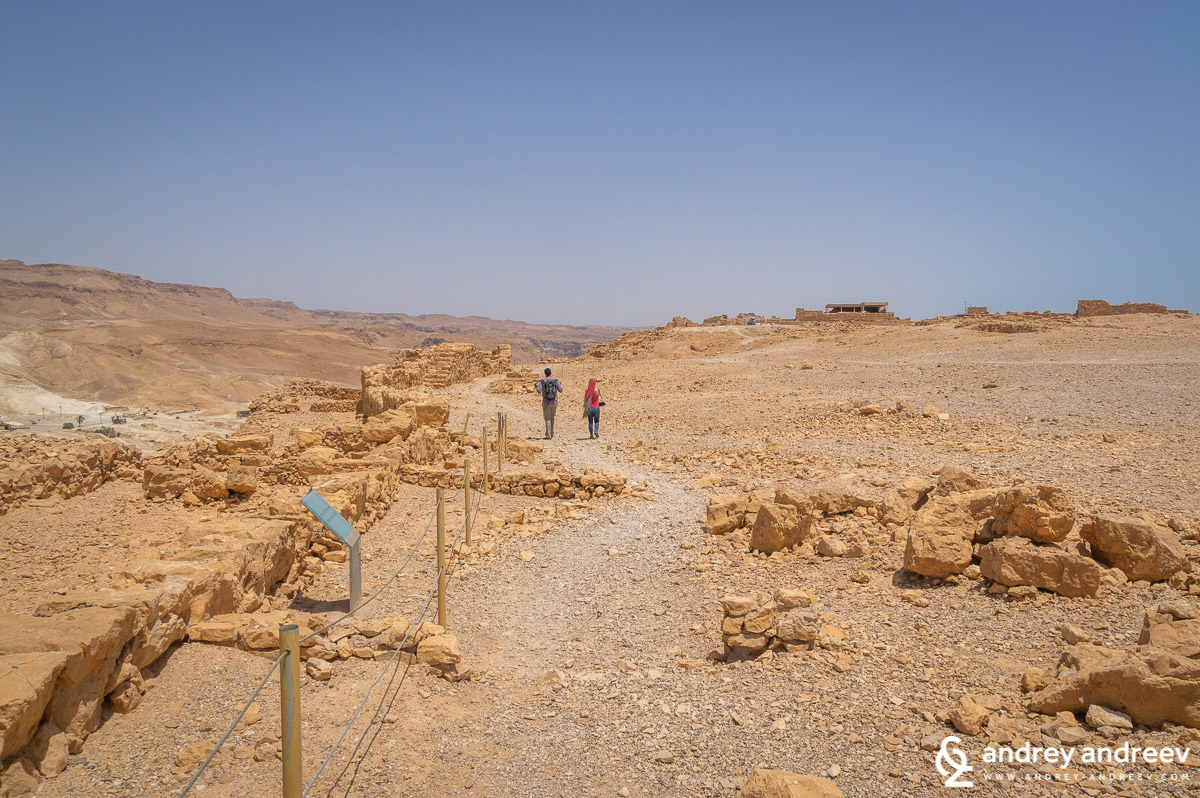
The fortress became the last resort of Jews during the war with Romans. In 73 Roman governor of Judaea, Lucius Flavius Silva led Roman legion XFretensis, a number of auxiliary units and Jewish prisoners of war, totaling some 15,000 men and women to lay siege to the 960 people in Masada.
The end of Masada
The Roman legion surrounded Masada and built a circumvallation wall, before commencing construction of a siege ramp against the western face of the plateau, moving thousands of tons of stones and beaten earth to do so. The ramp was completed in the spring of 73, after probably two to three months of siege. A giant siege tower with a battering ram was constructed and moved laboriously up the completed ramp, while the Romans assaulted the wall. Knowing the battle was over, the Sicarii made a brutal decision – to commit a mass suicide instead of becoming slaves of Rome. When Romans entered Masada, they found the dead bodies of the 960 men, women and children, writes Flavius Josephus.
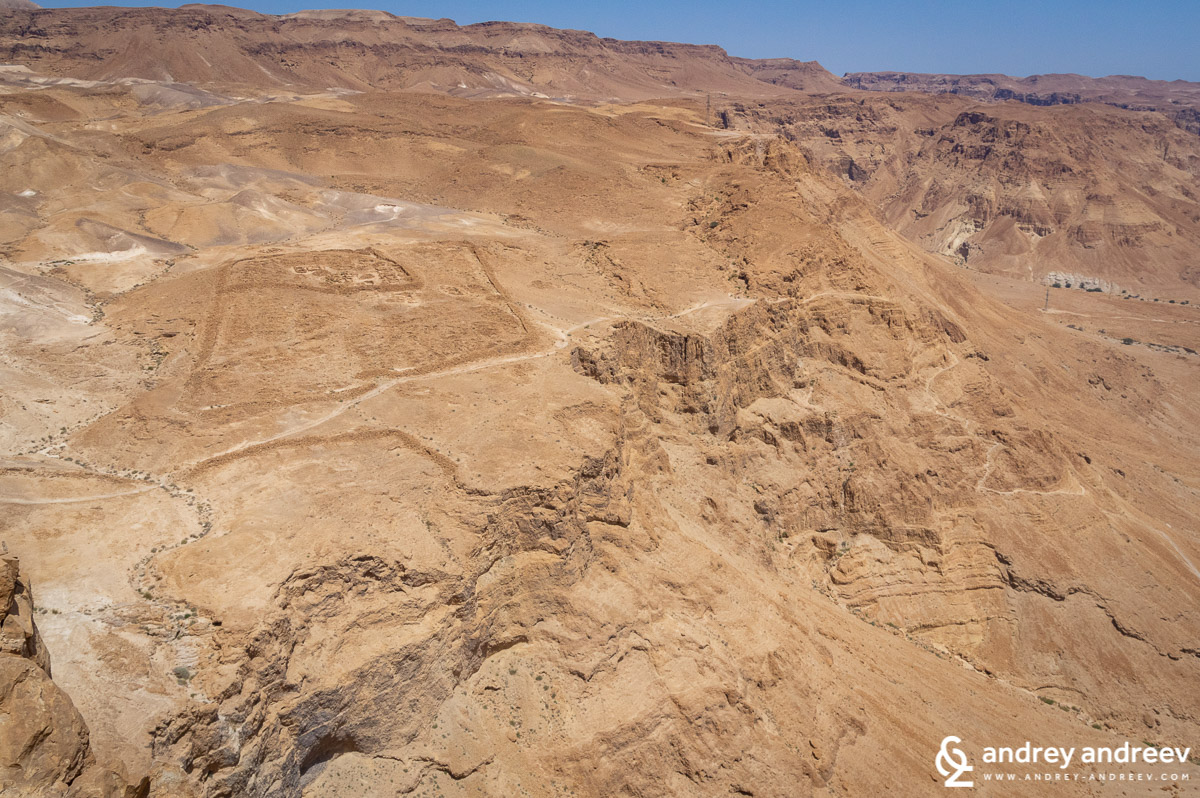

Today there is still no proof of Josephus’s story. After discovering Masada in 19th Century archaeologists found out that some of Josephus’s descriptions are exaggerated. There is no archaeological evidence of a mass suicide either.
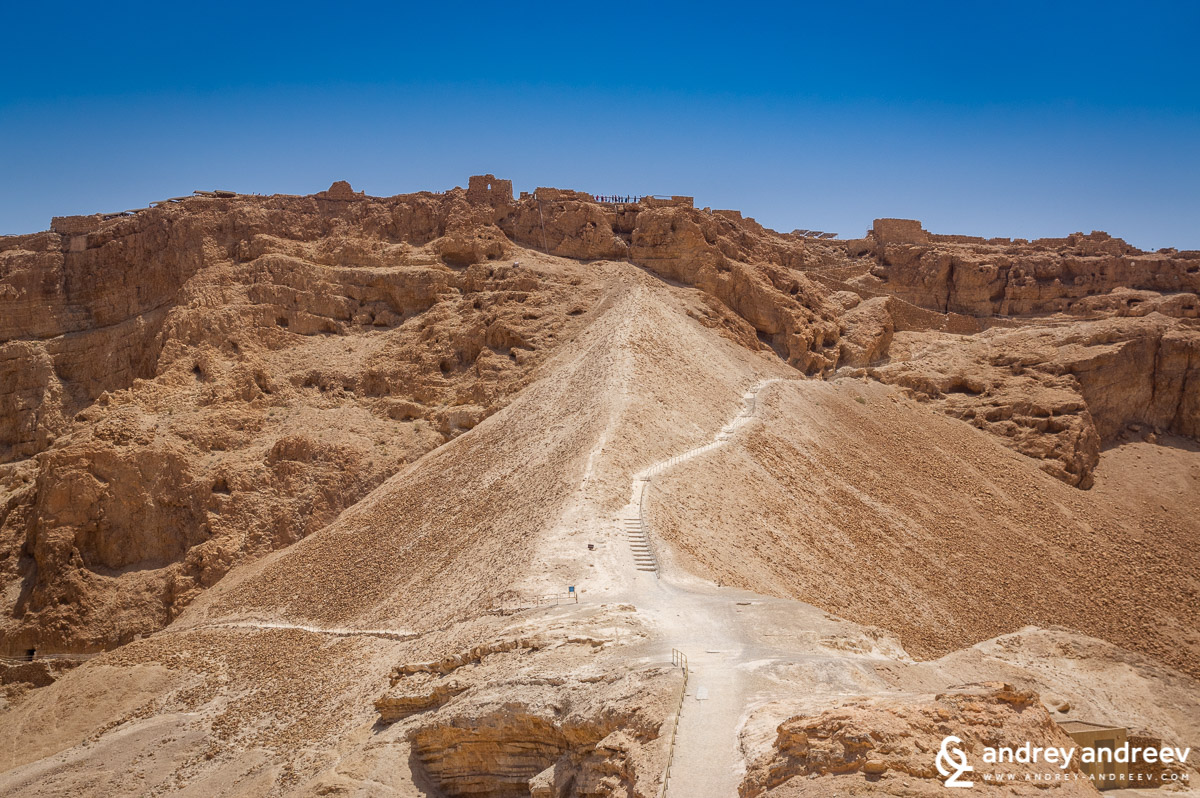
Anyway, the Siege of Masada is counted as the darkest page in Jewish fight against Rome. The Israeli politician Moshe Dayan initiated the practice of holding the swearing-in ceremony of Israeli Armoured Corps soldiers who had completed their training on top of Masada. The ceremony ended with the declaration: “Masada shall not fall again.” The soldiers climbed the Snake Path at night and were sworn in with torches lighting the background. Today this practice does not exist but the phrase “Masada shall not fall again” is still being used.
Walking through Masada
If you are approaching Masada from the West, you will enjoy the stunning view of the fortress hanging above the Dead Sea. From this side you go up the Siege path, built by the Romans. It takes 15-20 minutes to go up by the steep path and enter the fortress from the western gate.

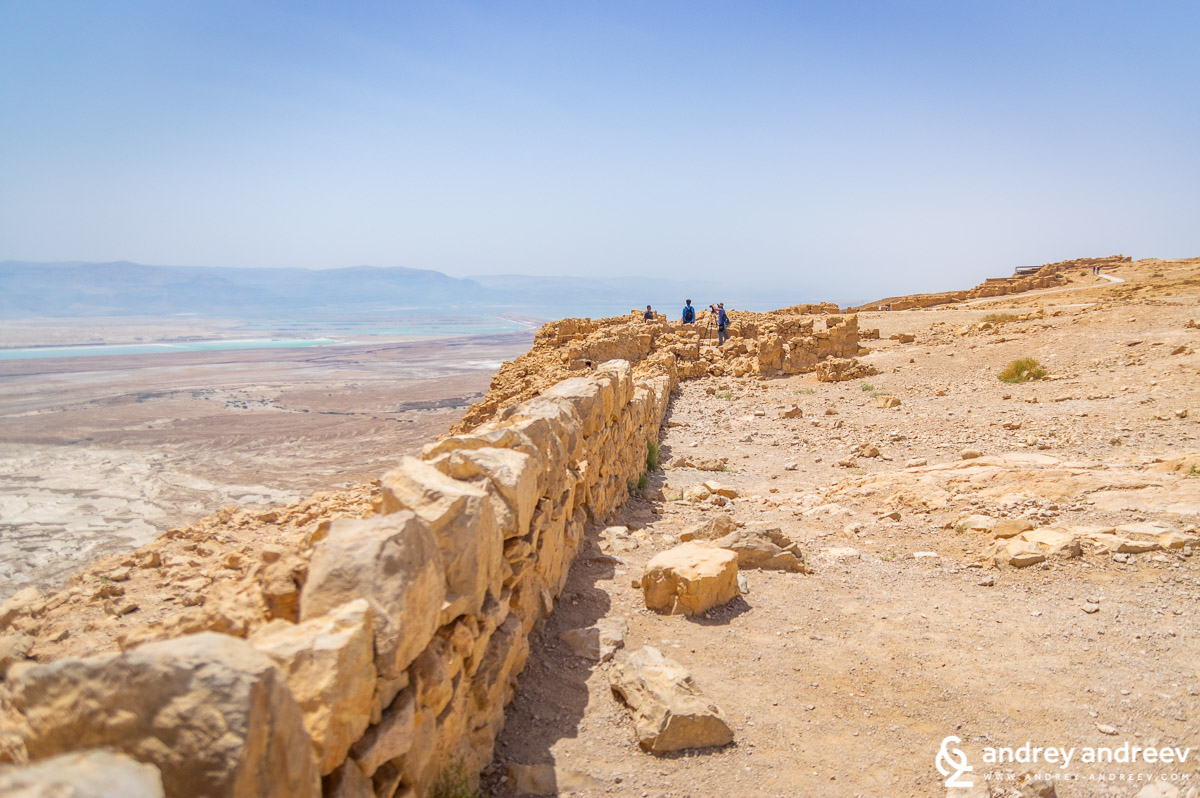
Up there we started our walk anti-clockwise. First we were attracted by the Synagogue – on of the oldest synagogues in the world. It was functioning during Herod’s age.


The Northern palace of Herod
After the synagogue we head to the Northern palace – the most impressive building on the top of the plateau. Although today it is in ruins, its glory is visible from far away. Its terraces look like a ship’s bow heading to the Dead Sea. The palace had 3 terraces, reception halls, bath house and a huge storage complex. On the upper level were the bedrooms of Herod and his family. It is thought that he had 10 wives and 15 children. The middle and lower terraces were used for receptions and parties.
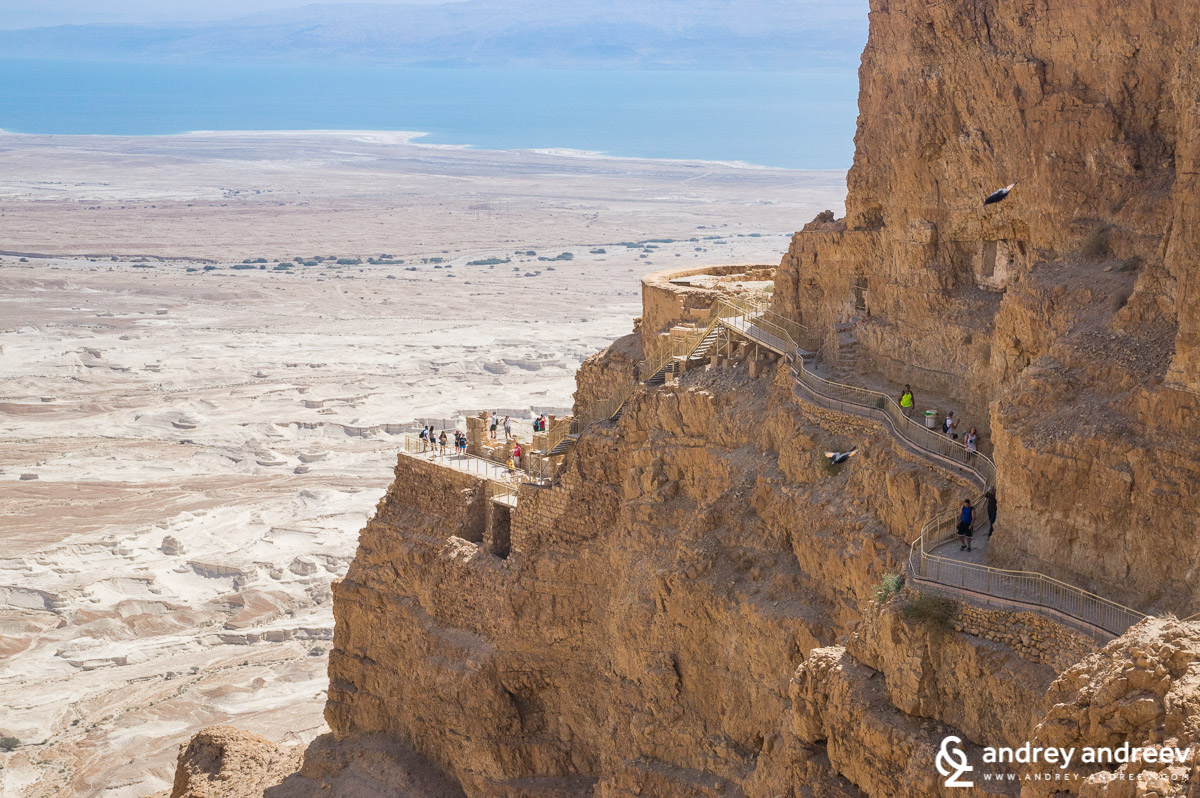
After going down to the terraces which were lavishly decorated we came back to the main upper level to take a tour through the well-preserved bath house. It consisted of several rooms with different temperature, not very different from a contemporary spa centre.

The sustainable city
To ensure the flawless life in Masada for a long time Herod built a huge storage complex. Near it is the Commandant’s house – the first place guests would see upon arrival in Masada.
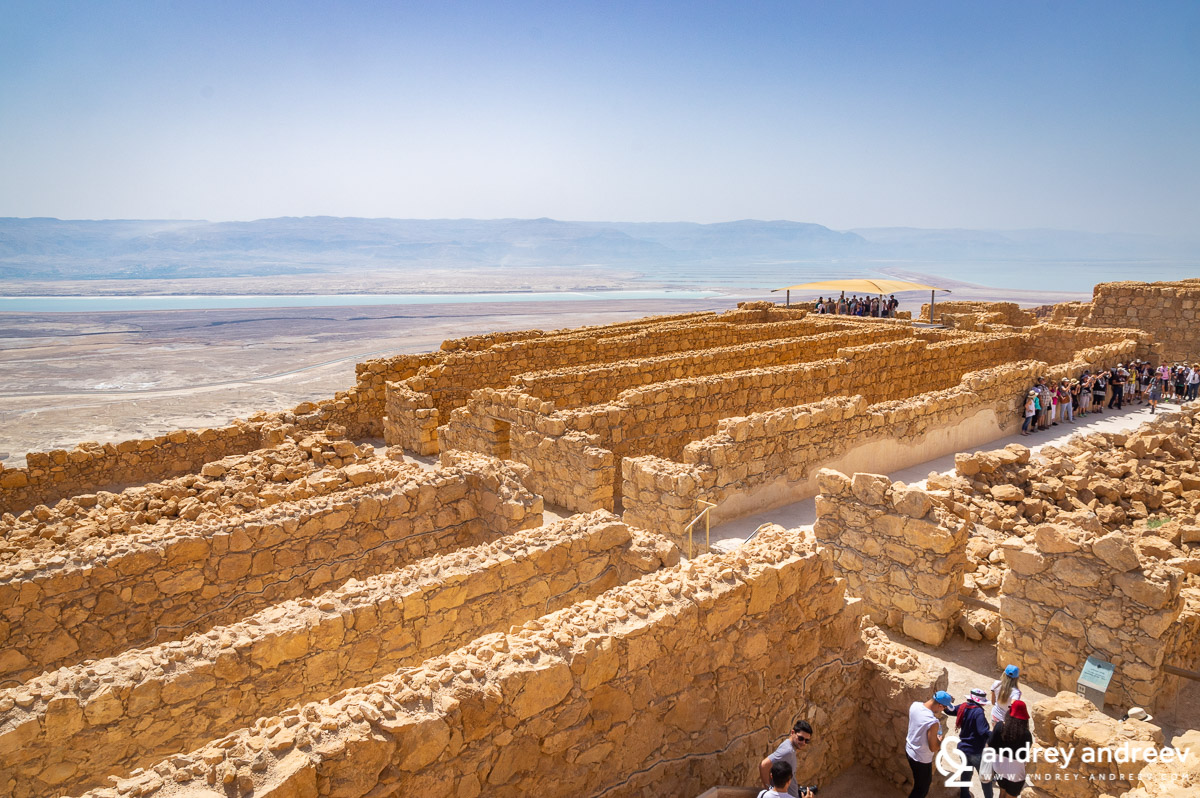
We continued our tour through the several observation points on the Eastern edge of the hill to find the next impressive object – one of the water cisterns. It is a huge cave, empty at that point, with smooth walls with signs left from the water through the years. It was cool down there and we had a short rest before going up in the sun. We had to hurry because it was almost noon and really hot outside.
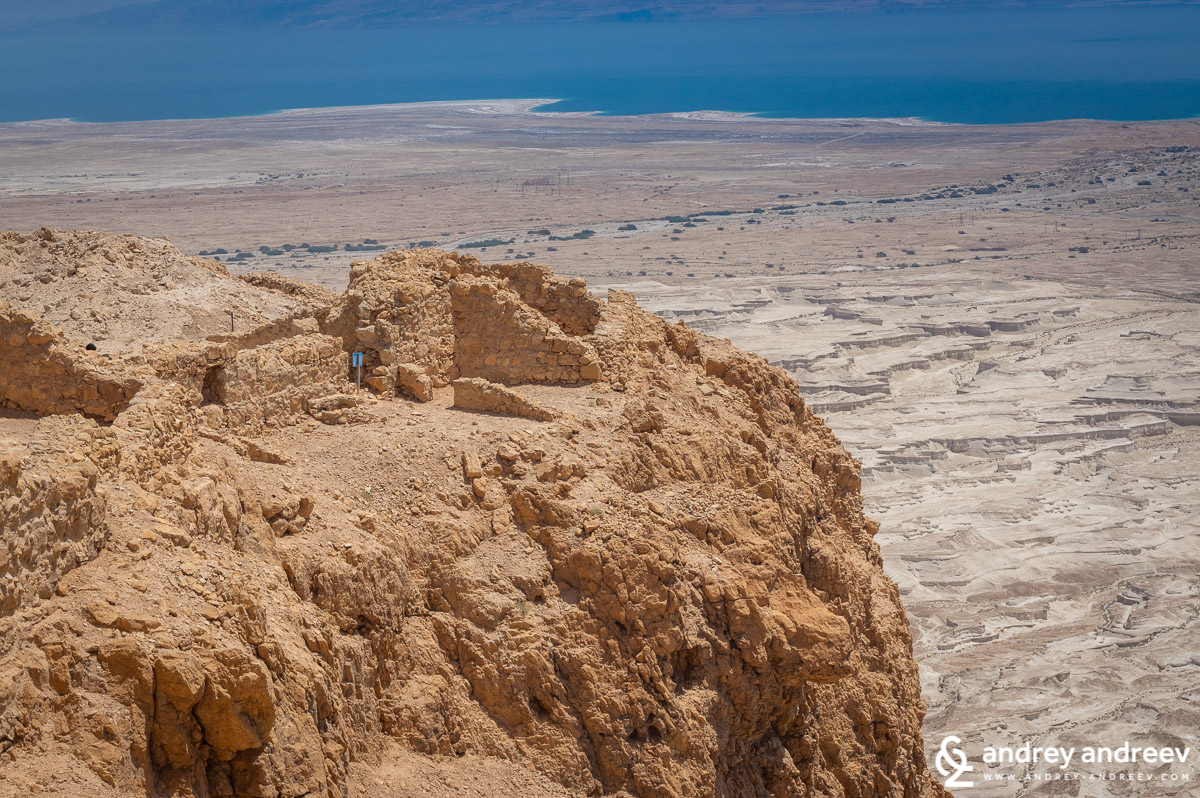
We passed by the swimming pool and tried to imagine the times when it was full of water with people bathing inside. Next we headed to the Western palace, took a short eye and hurried back down because the heat was already intolerable.


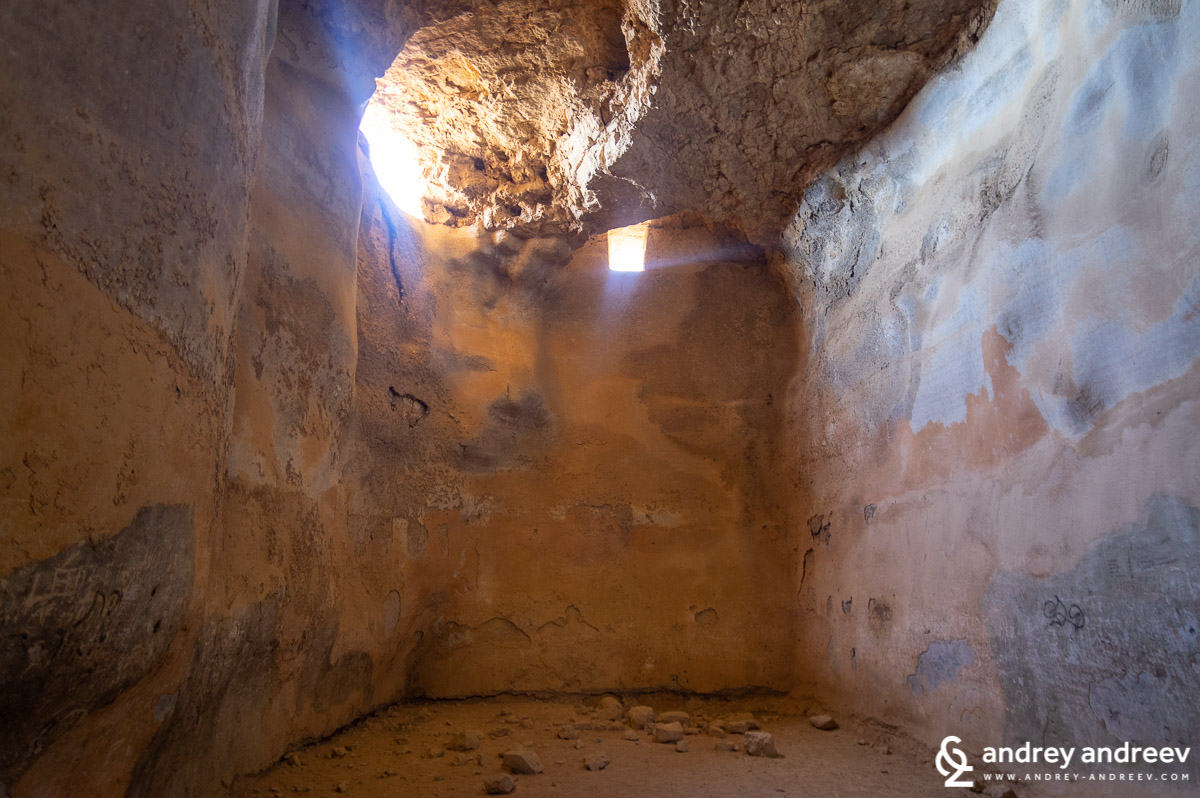
Construction of Masada
Masada was constructed in three phases, the first of which began in 35 BC. During that phase the Western Palace was built, along with three smaller palaces, a storeroom, and army barracks. Three columbarium towers and a swimming pool at the south end of the site were also completed.
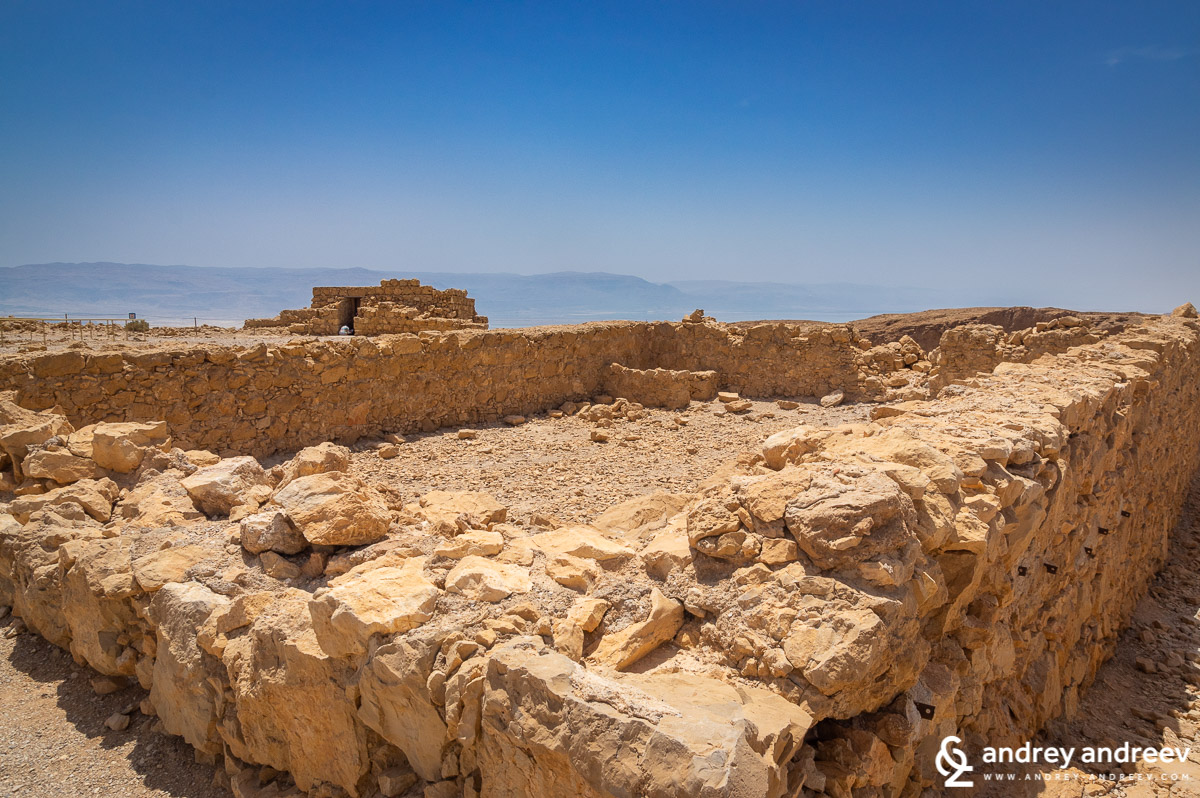
The second building phase in 25 BC included an addition of the Western Palace, a large storage complex for food, and the Northern Palace. In 15 BCE, during the third and final building phase, the entire site of Masada – except for the Northern Palace – was enclosed by a casemate wall. The casemate wall included a double wall with a space between that was used as living chambers for the soldiers and as extra storage space. The Western Palace was also extended for a third time to include more rooms for the servants and their duties.
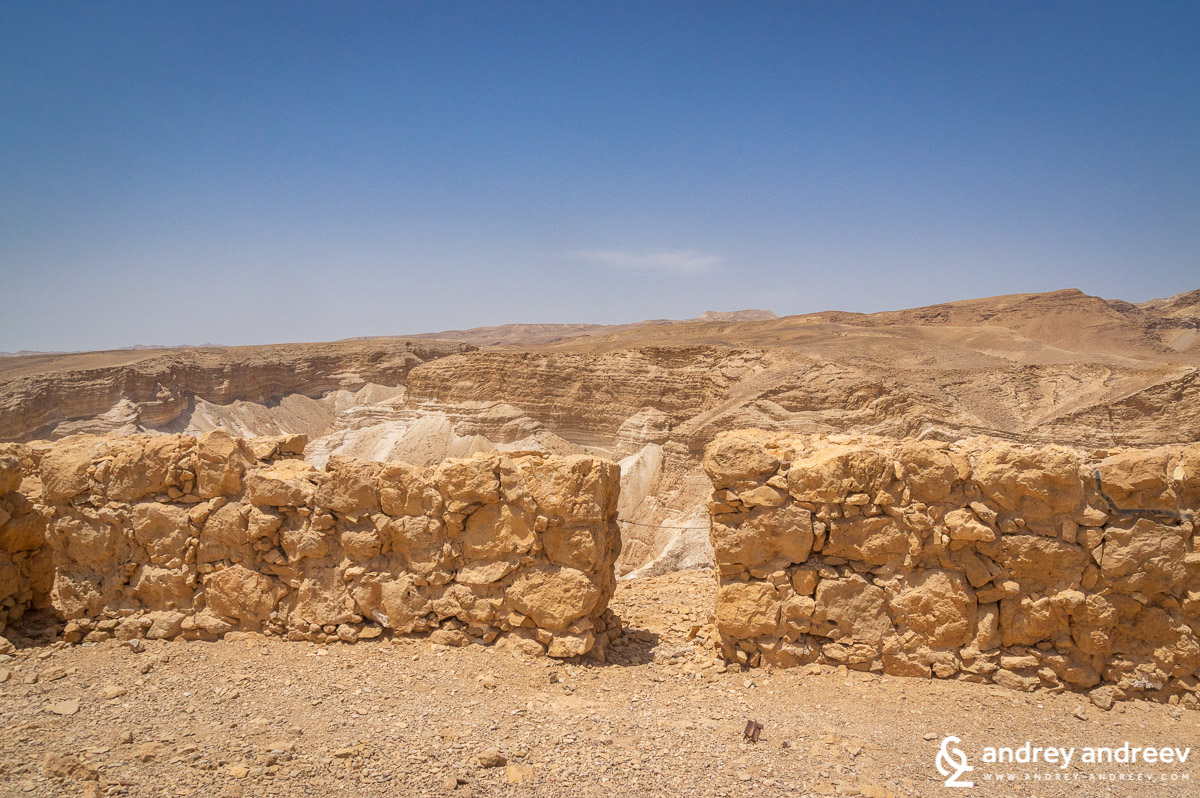
After Romans took Masada, they stayed in it until early 2 century and then abandoned it. In 5 century in the Byzantine period a monastery was established in the area. However, in 7th century because of the rise of Islam it stopped functioning. Then Masada was left in oblivion until 19th century when it was located by Americans Ellie Smith and Edward Robinson in 1838. In 1842 British painter W. Tipping and missionary Samuel Wolcott climbed Masada for the first time in centuries. Shmarya Guttman conducted an initial probe excavation of the site in 1959. Since 2001 Masada is a part of UNESCO World Heritage list.
Some tips for visitors:
- Wear a hat, especially in the summer. It is a desert, quite sunny
- Comfortable shoes are essential
- Bring drinking water although it is available upside too. You will really need it
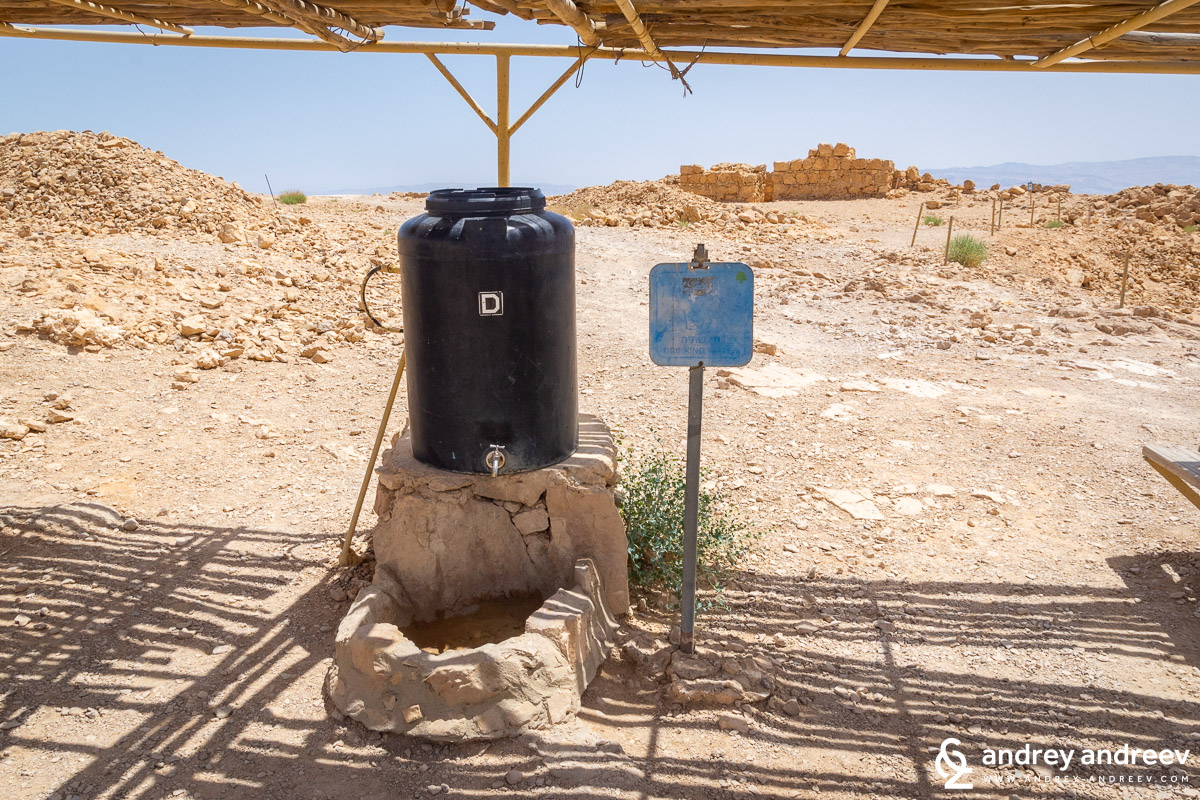
- No pets allowed
- Do not bring food on the top. Eating is forbidden
- Be careful when going on the edges
- Try to go as early in the morning as possible. Masada National Park opens 1 hour before sunrise
- The Snake Path takes an hour to climb
- The western path is easier and shorter and approaching from that side offers a better view
- There is no road connecting the western and eastern gate
- Working hours: April – September: 08 – 17 h. October – March: 8 -16 h. On Fridays and official holidays the park closes 1 hour earlier.
- The entrance fee was around 29 shekel (7 EUR). If you take the cable car it will be 76 shekels or 18 EUR.
We stayed in the nearby town of Arad:
Follow us: Instagram and Facebook







